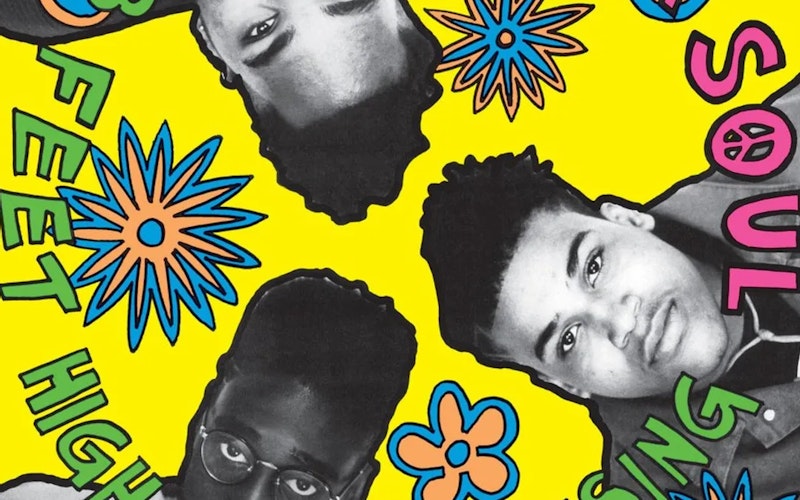
Music
De La Soul and Jubilant Worship
In the Black church, it’s all about the music. This was true in my own church growing up, where the choir never failed to bring the congregation to its feet, where we clapped and sang, even danced along to the song. And if we were all still abuzz with the Spirit once the selection was done, the choir fed off our energy and simply picked up where they left off to keep the party going. This is why, for me, spiritual worship has always been intertwined with music and jubilation.
Fans of De La Soul have found a reason to rejoice. After years of legal disputes over record contracts and music-sampling rights, the veteran hip hop group’s back catalog is now available on digital platforms. Though the Long Island trio—Posdnuos, Trugoy the Dove, and Maseo (or, Plug One, Plug Two, and Plug Three, respectively)—have been making music since 1988, most of it was largely unavailable via streaming until March 3 of this year. It’s a bittersweet triumph, as the news comes only weeks after the loss of Trugoy, who died suddenly on Feb. 12. All of which has provided a moment of reawakening. The message of De La’s music, the hype over its re-release, and the collective response to Trugoy’s passing remind me of what we hope to find in our spiritual worship.
De La Soul were pioneers of the alternative hip-hop scene. The group’s eclectic beats and uplifting rhymes—combined with a willingness to be vulnerable, even silly at times—countered the brash, tough-guy ethos that was so prevalent in commercial rap music in the late 1980s and early ’90s. De La never rocked fat gold chains, nor did they brag about street cred. In the words of Prince Paul, who produced the trio’s early albums, “I’m a nerd . . . but these guys [were] really nerdy.” They didn’t try to be “cool,” which of course made them cool. As Posdnuos raps on “In the Woods,”from 1993’s Buhloone Mindstate: “Catch me breathing on planes where the gangsta’s outdated / [Forget] being hard, Posdnuos is complicated.”
This alternative style is on full display with their debut album, 1989’s 3 Feet High and Rising, with its themes of peace and harmony, its cover art decked with bright colors and a flower-power aesthetic. De La encouraged listeners to defy expectations and to come to the party as their authentic selves, just as they had. As Trugoy raps on the album’s hit single, “Me Myself and I”: “Proud, I’m proud of what I am / Poems I speak are Plug Two type / Please oh please let Plug Two be / Himself, not what you read or write.”
For me, spiritual worship has always been intertwined with music and jubilation.
Though they would later shed their hippie image (notably with their sophomore album De La Soul Is Dead), few of us can deny the joyful nostalgia still tripped by the opening bars of “Me Myself and I,” lifted from Funkadelic’s “(Not Just) Knee Deep,” or by the upbeat tune of the Otis Redding/Steely Dan sampled love letter, “Eye Know.” Both are certified party tracks to this day, all but guaranteed to deliver good vibes.
Earlier De La songs like these sampled beats, melodies, and vocals from all across the music spectrum—from jazz to disco, from Johnny Cash to Schoolhouse Rock. Their work reflects a musical legacy larger than their own; it’s part of hip hop’s tradition of borrowing bits and pieces from other genres to generate a whole new sound. The result: an amalgam of diverse cultural influences that proves the power of music to unite us, no matter our entry point. De La’s contribution to the culture was—and is—their ability to create and sustain community.
We saw that community come together after the sudden passing of Trugoy the Dove. Tributes poured in from fans and fellow artists. In a joint message posted to De La’s Instagram, Posdnuos and Maseo called their late friend the “soul of the group” whose “influence will be felt for years to come.” This tragedy could have easily overshadowed their victory lap over the digital release of their catalog. Instead, it became an opportunity to celebrate Trugoy as the face of the group’s legacy and cultural impact and to share the same positivity that their music was known for from the beginning. And it provided them with another chance to spread their message of acceptance, authenticity, and love, for which Trugoy, in death, will forever be a symbol.
A week prior to Trugoy’s passing, the Grammy Awards celebrated 50 years of hip hop with an all-star revue, featuring an array of MCs spitting verses from their biggest hits. When it came time for De La Soul to hit the stage, it was Posdnuos alone performing their song “Buddy,” with Trugoy and Maseo both missing due to health issues. But while the trio was incomplete that night, their spirit was on full display, rousing an arena of fans to their feet to sing and dance along in unison.
The Bible encourages us to pour this same energy into our worship. In Psalm 98, we are exhorted to “Shout for joy to the Lord, all the earth, burst into jubilant song with music . . . Let the rivers clap their hands, let the mountains sing together for joy.” While it may not have been gospel music, the Grammy performance evoked many of the same qualities as the church services from when I was a kid: the jubilant celebration steeped in tradition, the community of voices lifted in (de la) soulful liturgy. And just when we all thought the music was over, we’ve once again been invited to come together to make a joyful noise.
Topics: Music